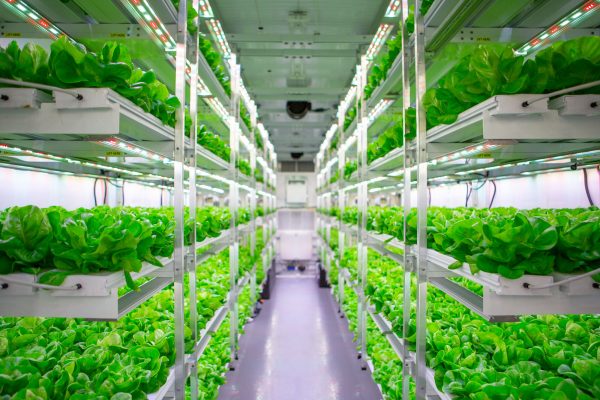Hydroponic farming has taken off and is a preferred approach to growing crops for many hobbyists and commercial farmers. While this is increasingly true in many parts of the world, hydroponic farming in Nigeria is still very much in its infancy. A scattering of farmers use it to cultivate vegetables and can achieve faster plant growth rates and greater yields compared to traditional methods.
Read more about Agriculture
If you’re curious about hydroponics or would like to get started with it, you’ll find this article useful. But first, let’s explain what it is.
What is Hydroponic Farming?
This type of farming involves growing plants in nutrient-rich water instead of soil. The medium may be held in a container or a purpose-made solution. While hydroponics has a long history (stretching back more than 2,000 years), it has only recently gotten the attention of gardeners and farmers. It is favoured by an increasing number of people because of its many benefits. Ironically, it needs a lot less water than soil-based farming. And, as we’ve noted, it often guarantees faster growth and better outcomes than many alternatives.
Other Benefits of Hydroponic Farming
Here are some other advantages of hydroponic farming:
- Because it’s done indoors (i.e. in an enclosed space), there’s a significantly reduced risk of pest infestation
- It can be practised in urban environments, thus providing locally grown food for cities
- This makes more efficient use of space; roots are less dense because they can access nutrients more easily
- It saves a good deal of time; farmers don’t have to spend time tilling, weeding, or watering
Challenges
There are at least two major disadvantages of hydroponic farming. They are:
- It requires substantial capital outlay to set up a sizeable commercial farm (running into millions of naira)
- You will need a steady supply of electricity to power its components, something that isn’t always available in Nigeria
How to Set Up a Hydroponic Farm
If you’re sold on the idea of hydroponic farming in Nigeria, here are the steps you can take to begin:
Research and Educate Yourself
For the absolute beginner, there’s a lot to learn, including the various systems, techniques, and crops suitable for hydroponic cultivation. Invest time in reading books, exploring online resources, and (where possible) attending workshops to gain a solid understanding of the fundamentals.
Sign up for the Connect Nigeria daily newsletter
Choose Your System
Hydroponic systems come in different types, each with its unique features and requirements. Common systems include deep water culture (DWC), nutrient film technique (NFT), vertical farming, and aeroponics. In deciding as to which to go for, examine your space, budget, and crop preferences. This way, you’re better able to select the most suitable system for your farm.
Select a Growing Medium
Unlike traditional soil farming, hydroponic systems utilize inert growing mediums such as perlite and coconut coir to support plant roots. Choose a medium based on its water retention, aeration, and pH stability properties, to ensure optimal plant growth and nutrient uptake.
Set Up Your Infrastructure
Prepare the infrastructure for your hydroponic farm: growing containers, nutrient reservoirs, irrigation systems, lighting (if growing indoors), and climate control mechanisms. You need to be particular about things like proper ventilation, temperature, and humidity levels, all of which contribute to an ideal growing environment for your crops.
Source High-Quality Seeds or Seedlings
Hydroponic farming in Nigeria is suitable for crops like leafy greens, herbs, tomatoes, and cucumbers. You stand a better chance of succeeding if your seedlings are high quality. So, find high-yield, disease-resistant varieties suited for hydroponic cultivation; you should ask experienced farmers about their source for these things, so you only purchase seeds or healthy seedlings from reputable suppliers.
Nutrient Management
Plants grown with this system rely on nutrient solutions to fulfil their nutritional requirements. You will be producing the solutions yourself by mixing nutrients in the right proportion. Thankfully, there’s plenty of information online about this. Also, make sure to continually monitor pH levels to ensure optimal nutrient uptake and prevent nutrient imbalances.
Implement a Maintenance Routine
Without a maintenance schedule to follow, your farm could fail. Things you need to do include monitoring plant health, checking for pests and diseases, and promptly addressing any issues that arise. Keep your system clean, replace nutrient solutions as needed, and prune plants to maintain optimal growth and productivity.
Harvest Your Crops
As your crops mature, harvest them at the peak of freshness for the best flavour and nutritional value. If you’re doing this for financial gain, you’ll want to sell your produce to local markets.
Register to attend the CN Business Mixer
Final Words
Hydroponic farming in Nigeria is no simple operation. It demands a lot of patience, and a willingness to learn. If you follow the steps we’ve talked about here, you can embark on a profitable and fulfilling journey of sustainable agriculture and fresh food production right where you are.
Got a suggestion? Contact us: [email protected]


